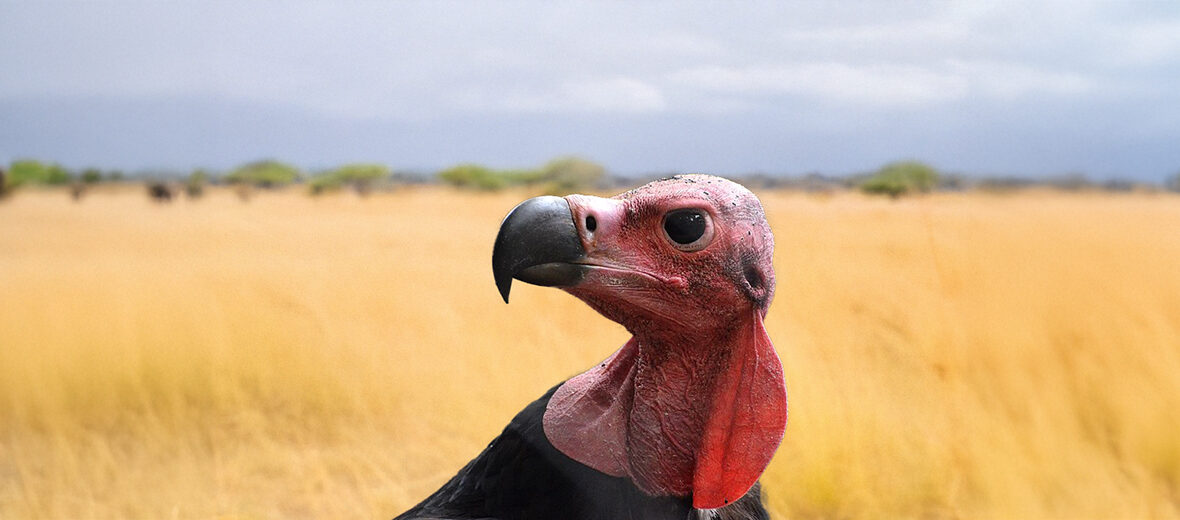
The red-headed vulture, aka Asian king vulture, Indian black vulture, or Pondicherry vulture, is a diminishing vulture species that hails from the Indian subcontinent and southeast Asia. These vultures face the threats of habitat loss and destruction at the hands of farming; deforestation at the hands of the logging industry; hunting; trapping; electrocution, due to power line collisions; and ecosystem modifications. The IUCN lists these incredible scavengers as Critically Endangered. Their populations are also decreasing.
First the Stats…
Scientific name: Sarcogyps calvus
Weight: Up to 13.9 lbs.
Length: Up to 34 inches
Wingspan: Up to 8.5 feet
Lifespan: Up to 30+ years
Now on to the Facts!
1.) The disappearance of vultures, in general, from Asia is linked to a host of factors: primarily the demise of wild ungulates, unintentional poisoning, the intensification of agriculture, increased sophistication of waste disposal techniques, direct persecution, and disease.
2.) Less then 10,000 wild individuals remain, to date.
3.) The color of the iris differs between males and females. Males have a paler, whitish iris, while the female’s iris is dark brown.
4.) These Old World (from Africa and Asia) vultures are monotypic (they are the only species in this genus). There are no subspecies recognized.
5.) While they prefer semi-desert biomes, they can also be found among deciduous forests, foothills, and river valleys.
But wait, there’s more on the red-headed vulture!
6.) Females lay a single egg each season that hatches in up to 45 days.
7.) Both parents participate in building the nest and incubating the egg.
Did you know…?
The widespread use of the NSAID diclofenac (nonsteroidal anti-inflammatory drug) in veterinary medicine in India has resulted in their population to collapse in recent years. Diclofenac is a compound now known to be extremely poisonous to vultures.
8.) Their population has been basically halved every other year since the late 1990s, and what once was a bountiful species numbering in the hundreds of thousands has now come dangerously close to extinction in less than 2 decades.
9.) Evidence has been shown that hunters have begun using poisons in their hunting regimens. These poisons are then transferred to the vultures when they visit a carrion (dead animal) site of an animal killed by such poisons.
10.) Intentional poisoning of these vultures for belief-based or faith-based use has also been reported in Cambodia.
Now a Short Red-Headed Vulture Video!
Be sure to share & comment below! Also, check out the Critter Science YouTube channel. Videos added regularly!

Want to suggest a critter for me to write about? Let me know here.
Some source material acquired from: Wikipedia & IUCN



